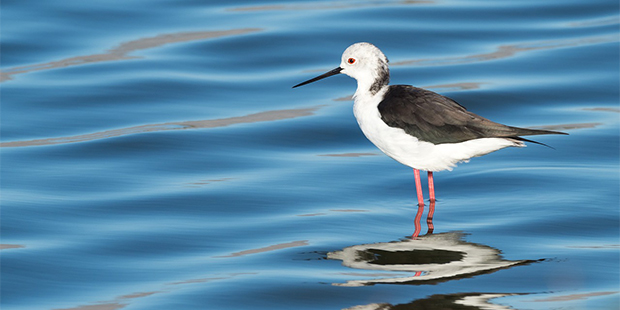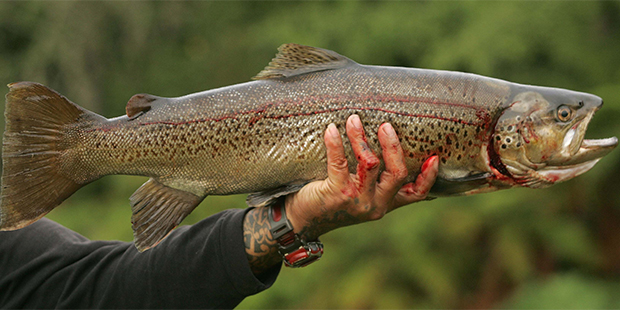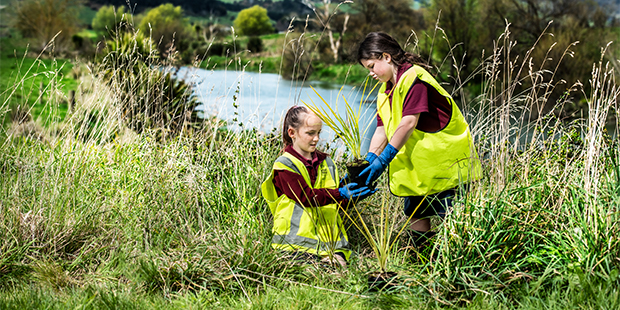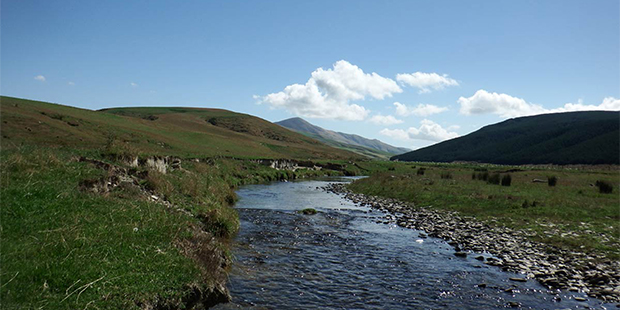River clean-up energises farmer
Invests $18,000 of his own money to help restore river after realising the impact on waterways.


He’s a “townie” turned dairy farmer and is enthusiastically embracing the clean-up one of New Zealand’s most degraded rivers.
Gerard Vallely, a 65-year-old who, with his wife Ann, runs two dairy farms in west Otago, has set aside a sizeable chunk of his property to be developed into a wetland – and has so far spent $18,000 of his own money doing so.
The farms border two streams, tributaries of the Pomahaka River, and the land he has ‘donated’ is part of an overall project in the district to restore the river, long considered one of the country’s best fishing locations, back to health.
Vallely is working to create a wetland in a nine-hectare block on his property because, he says, “it is the right thing to do.” As well as fencing the stream edges to prevent stock wandering into the water, Vallely has so far put in 2500 native plants, paid for out of his own pocket, and has plans to plant up to 10,000 more over the next 12 months.
One of a group of farmers in the Pomahaka River Water Care Group (PWCG), Vallely says it is what he has learnt through taking part in the project that has shaped his environmental outlook.
“You change over time,” he says. “I was originally a townie from Invercargill and when I started farming the idea was to farm as close to the creeks as you could, to utilise every inch of ground.
“Since I’ve been part of the Pomahaka catchment group (it was formed in 2014) it has made me realise the impact this can have on the health of the water. It gets you thinking…it’s what we leave behind which counts.

Photo / Supplied.
Photo / Supplied.
“But it’s not only us. A lot of other farmers are also involved with the (PWCG) project and it has turned into a real groundswell.”
The Pomahaka River, itself a tributary of the Clutha River, has suffered over a long period. Damaging levels of E.coli (bacteria) and nitrate and sediment run-off have helped make it the most degraded rural river in Otago, according to Land, Air, Water Aotearoa (LAWA).
But since PWCG began its work five years ago, significant progress has been made – with recent testing by the group showing bacteria levels have fallen by up to 90 per cent and nitrate leaching by between 30 and 40 per cent.
The river flows for about 98km between Gore and Clutha and has been described by Land, Air, Water Aotearoa (LAWA) as being of “high value” for fishing and many other recreational pursuits.
Vallely has been farming for almost 30 years. Starting out as a sharemilker, he set a goal to go sheep farming, eventually undertaking an operation near Te Anau which he ran for 23 years. Then, in 2006, he changed tack, buying the dairy farm he and Ann now run.
The property, which Vallely subsequently split into two separate farms, covers a total of 450 hectares and runs a combined dairy herd of about 1200.
He says the block he is turning into wetland consists of two sections, a low-lying area of five hectares running to the stream edges and a four-hectare parcel of higher land.
“I always said it would be the last paddock I developed before retiring; we didn’t ever farm it intensively but used it to graze a herd of bulls to keep the grass down.”
But all that changed after Vallely became involved in the PWCG project and he realised it could be put to better use in helping to improve the ecosystem of the river and its tributaries.

Photo / Supplied.
Photo / Supplied.
Starting with a $2000 grant through the NZ Landcare Trust, Vallely has fenced off most of the stream edges and has begun riparian planting with native flax and carex grasses. On the higher ground he is planning to create a forest of native trees common around lowland areas such as kahikatea.
Species like carex help improve water quality, promote a healthy habitat for native fish, insects and birds, provide stream-bank stability and, says Vallely, help “suck nitrate out of the water.” He is also looking to create a weir in the streams to act as a sediment trap.
He says it is still too early to tell what effect the work is having as water testing at his property has only recently been carried out for the first time.
# In the overall PWCG project, actions include extensive riparian planting of around 22,000 native trees and plants, the establishment of best-practice standards like encouraging farmers to fence off river banks and other waterways to prevent stock accessing the water, promotion of on-farm discharge testing and trialling of sediment traps. The group does its own testing - checking water quality at 28 sites four times a year.






